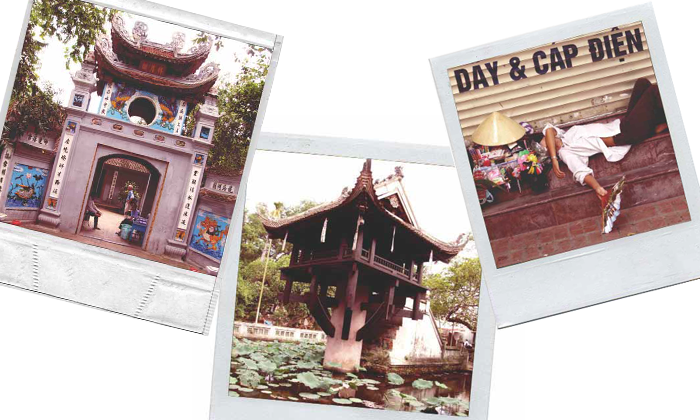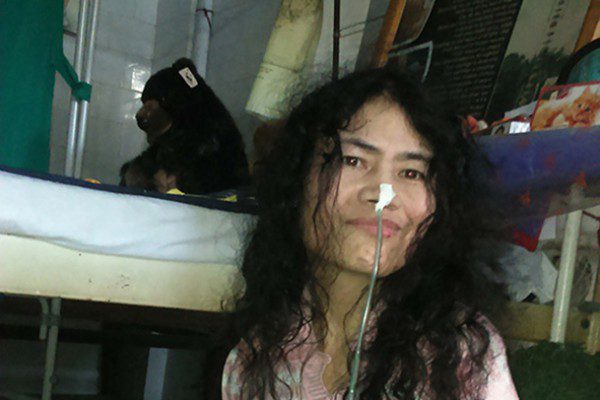Travelling up the Red River in Vietnam, I reached Hanoi one very sunny summer day.
It had been a long journey that began in Bangkok, and took me to places including Phnom Penh, the capital of Cambodia, then to Siem Reap, the site of the majestic ruins of the Angkor Vat temples.
It is a strange sort of consolation to experience one’s self in isolation from people one knows, but at the same time denying the indulgence of solitude by immersing in crowds on distant latitudes and longitudes.
There is a mad fluidity to personal time which is ordinarily denied by the rigors of communality and routines. Refuse these, travel away, and you are left with an immeasurable mass of senses and tenses.
The rather jittery Jetstar flight led to a long drive along the highway in Hanoi lined with billboards and business complexes (architecturally the place is a jumble of styles, quite like commercial towns in China) until I got to the city proper where a nice hotel gave me a room where everything was synchronised to perfection – from the roses in narrow vases to dimmable lights and the etched lilies on copper headboards above the bed – save for the window facing a brick wall! Lizards chased each other up and down the rough brick and cement contours. As I lay sleepless in that strange room, it felt like I had stepped into someone else’s dream, one with the texture of a Murakami novel or a Wong Kar Wai film.
” If Ho Chi Minh City had a distinctly French influence, present day Hanoi had sure signs of the Chinese; an unsurprising fact, in view of its geographical location. “
In the city, outside, there was the ubiquitous yellow star on the red canvas (the flag), there were the pavement sellers with their conical hats, numerous construction sites and many hoardings with hammer-and-sickle flags beside the painted men and women standing shoulder to shoulder for the good of the nation.
I went past the Hoa Lo prison, the offices of government, and many streets lined with small shops that sold the most colourful things, from threads to lottery balls till I reached the imposing gates of the Temple of Literature. The Quoc Tu Giam (National University) dates from 1076, and was developed further in the 15th century. The students at this institution of scholarly excellence, studied especially literature and poetry, spending from three to seven years there. Their books included the Confucian texts, Chinese history, and ancient poetry. There are 82 stelae of doctorates recording the names and native places of 1307 graduates of 82 Royal Exams held between 1442 to 1779. The stelae of the doctorates are places on stones in the shape of tortoise shells; the tortoise is one of the four holy creatures of country (the others being the dragon, the unicorn, and the phoenix). I read through this and other information before letting my eyes wander to the natural surroundings.
It was a scorching afternoon. At the gate, I passed a pair of lovers breathing through each other’s eyes; their gazes locked in such an embrace that they painted a still-life picture amid the bustle around them. Inside the old monument, one walked a path through leafy trees surrounding the ponds and reached tortoise-shaped stelae. From a small stone bridge, I watched the serene heart-shaped lotus leaves in the still waters, complete with the dragonflies and the dewdrops. The long stems of pale pink buds, on the cusp of blossoming, peeked up from the mirror-like waters which, now and again, bore concentric ripples made by the wind’s gentle touch. The scene was an unforgettable mix of sensations, enhanced by the splat-splat sound of mangoes falling on the brick tiles of the temple. There were many mango-collecting wardens about, with their plastic bags full of the fruit. I got some too, and because of that, survived on a dollar that day, including small change I gave to a crippled beggar.
Earlier, I had been to the Hoan Kiem Lake (lake of the sword restored), a landmark in the centre of touristy old town, where a gray and red temple stands in the middle of green waters that reflect the drifting clouds in yellow noon. Inside the courtyard, a large carved metal container burns hundreds of incense sticks. A 5th century King returned a precious sword to a tortoise genius that lived in this lake, and legend has it that the sword is still buried somewhere in the lake.
Arresting sights took the form of a slender woman in an ao dai with a baby blue coloured umbrella, walking across a bright red bridge anchored by overhanging branches of willowy trees. Around the sides of the lake were gazebo like structures in stone that were inscribed and re-inscribed with very sentimental love graffiti. Why do lovers have this urge to carve their initials and dates into trees and walls? Why, unless they need to mark the moment when their love is still alive, as if they dread the foreknowledge that nothing survives the onslaughts of time.
Ahead of me, a butterfly skipped on the pavement, shaped and coloured exactly as a yellow leaf.
I must have walked many miles. At the Ngoc Son temple, looking at the statue of the Buddha, I thought of idol worship (or even the generalised act of bowing one’s head in prayer, something common to religions where idolatry is forbidden) and how this gesture represents not just a relation of the self with the divine, but of the self with itself too.
I reached the massive open area with an imposing colossal monument for Ho Chi Minh, the angular plain gray stone mausoleum where his body lies embalmed. Soldiers in uniform stand alert at the gates, and the flag flies high. The space around the building declares itself with a seriousness that I only managed to overcome by spontaneously playing badminton with a group of people outside a local park. I borrowed one of their rackets, put my camera bag aside and engaged in one of the only two sports at which I was once good enough to compete (the other being kho-kho, go figure!).
A jackfruit tree stands not far from the One-Pillar Pagoda, an interesting architectural relic built in 1049 under the Ly Dynasty. The Buddhist-inspired pagoda is shaped like a lotus blooming on a stem and describes a dream of a King (King Tong 1028-1054) wishing him longevity.
If Ho Chi Minh City had a distinctly French influence, present day Hanoi had sure signs of the Chinese; an unsurprising fact, in view of its geographical location. My impression of Vietnam was of an overwhelmingly vibrant country with an electric energy that flowed through its people as they went about their daily lives, working evidently hard.
Nonetheless, the struggles of livelihood were probably acute for many. The Vietnamese newspapers were reporting that ‘inflation increases family values’, saying that due to rising costs, people were choosing to stay together and share expenses. A nice social slant to an economic woe, one might think.But then, what of those who don’t have larger families to live with? I am thinking of a particularly poignant scene I witnessed one evening.
It was nearly dusk when I passed by the railway line that crossed through an area of the city. By the side of the tracks, in a ramshackle tent, lived a very old couple. They had just finished cooking in the open and I watched them from the other side of the tracks as they sat down for their evening meal— two human figures moving in a motion made slow by their arthritic bodies and failing eyesight, as they made their way to two broken chairs beside a broken table. Poverty is graceless, but the poor often retain the grace of their pride. They had near them a large blue poster, faded and showing water marks, framed in white wood, with the words ‘Interlaken – Schweiz. Switzerland. Suisse’ written across the top. It depicted a beautiful and quintessentially European scene: In the foreground of a skier and snow-capped mountains is a gaily lit glittering grand European building with the sign ‘Victoria’. The trees are laden with snow and the picture is festive, if unpeopled. In black flowing cursive script, it celebrates ‘Highlights from 1860, 11333 feet above sea level’. Near the tarpaulin covered heap of discards by a pebbly railway line in dusty Hanoi, it was out of place. And yet, it was the very presence of a grace. The old couple had probably picked it up from a rubbish heap. An expat’s discarded wall piece, I imagine.
This aged homeless couple, with their roadside lives held together at the joints – propped, fastened and mended by bricks and strings and plaster – sat down and slowly ate from their battered soup bowls, underneath the shadow of the Swiss poster that formed an incongruent backdrop, placed on the table that leaned on the mossy damp wall with its peeling plaster and cracked tiles. The night gathered around them, the city turned on its lights, and they seemed not to notice the world or time passing around them.
A few steps away was the world of the rich. Dongs (the name for Vietnamese currency) aplenty to buy anything one might desire. The victory of market capitalism (regardless of the official name of the economic system, a certain kind of capitalist rationality has come to define Rationality everywhere) is also a victory of sensualism. Of epicureanism. Of delight, desire and titillation. People give up much by way of freedoms, ethics and morals because they can choose the taste of food, the colour of clothes, the contours of their physical surroundings and textures. In a world giving primacy to objects, inter-subjectivity is the first casualty.
Yet, who am I to pontificate? Burned by wanderlust, I lose the certainties of existence (and also a certain existence) through travel, I gather memories: images, places, names. Safekeeping them in a terrifyingly multiple world in which one must live, love, and on some beautiful days, love living.
One morning, a Vietnam Airlines Fokker 70, took me away to Laos.


